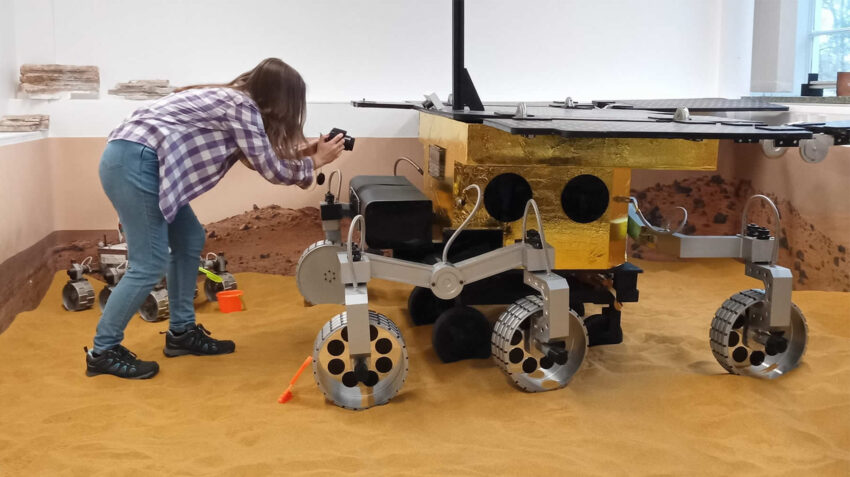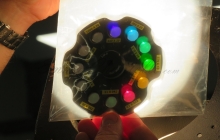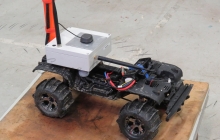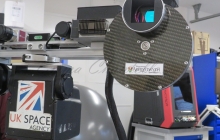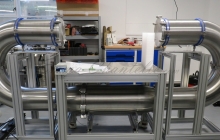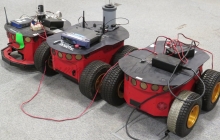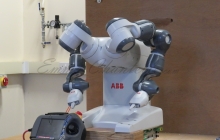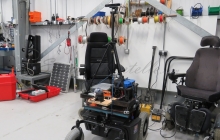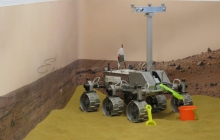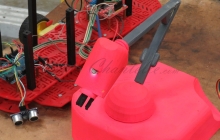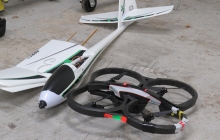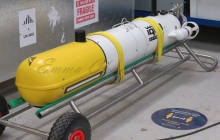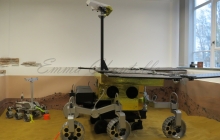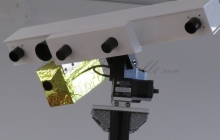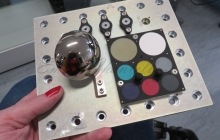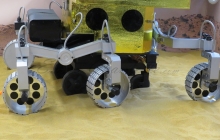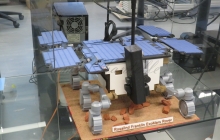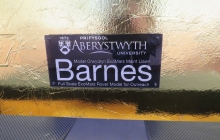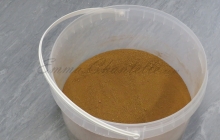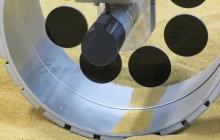So after our last visit to Aberystwyth University for Beachlab:relocated in 2021, we have been itching to go back and visit the amazing projects being worked on at the computer science department. In particular I was extremely keen to see the Mars Lab, and their iCub.
We requested permission to go back down to visit the projects shortly after Beachlab, so we could film the robots, the teams/staff, and ask some questions that home educating people across the world might be interested in.
We were lucky to be invited back a few months after Beachlab 2021, and we made as much use of the trip as we possibly could. We took cameras, lights and sound equipment and headed back down to the center of robotics in Wales to experience their incredible work.
We had a great day overall, and we are still editing the footage (my camera was terrible in artificial or low light). We may have to do some zoom calls to replace them, but that remains to be seen.
First of all, we saw the amazing iCub, a robot used at Aberystwyth to model how infants learn. We then saw a number of wheelchair projects that are designed to help people around the home and to increase their independence, we saw some fantastic projects by a member of the Aber Robotics Club, as well as multiple flying robotics projects. We saw a robotic underwater ROV called Afanc, and two mapping robots called Idris and Tryfan. We also saw a coastal research, autonomous navigation robot.
While all of those robots were exciting in their own way, I have always been fascinated by Mars, NASA, and Space X, and their missions to put rovers on the moon (and I only have limited space here really, so I should get right to talking about Mars) The only other kind of robot I ‘may’, have more interest in, is bomb disposal, or SAR/rescue robots. They obviously share a lot of similar characteristics with each other, and I get very excited about them.
So, we went so see their Mars Lab, which was absolutely fantastic. There we saw again, the amazing Barnes Rover (the replica was named after the late Professor Dave Barnes), which is a full scale replica of the ExoMars rover, a robot that at the time of our interviews, was due to head to Mars in 2022. It’s a joint UK Space agency, and European Space Agency mission, which also includes companies like Airbus.
The unfortunate situation in Ukraine at the moment might now delay the launch, but we’ll see. We have also found articles referencing it being due to launch in both 2020 and 2021, but things like this change often. We’re looking forward to seeing it launch sometime soon.
The real ExoMars rover will also house their PanCam camera, which is a phenomenal piece of equipment, funded by the UK Space Agency, that will seek to “answer several key questions in the search for life on Mars”. The rover has a drill on it, which will be used to sample varying geology on Mars. The camera’s stereo vision (two cameras), each have 11 filters on them, which allow PamCam to investigate rocks at different wavelengths of light (Mars’ atmosphere can be weird, especially through dust).
We were lucky enough to see the filters, a working PanCam project, a new ‘wind tunnel’ to simulate how dust might land on the reference markers on the robot body, an inspection mirror PanCam will use to inspect the underside of the ExoMars rover while the drill is out, fiducial markers, some colour reference/calibration markers, and even a bucket of real Mars simulant (special sand). The closest thing we have on Earth to Martian dust.
It was incredible. We also got to meet the much smaller, functioning rover used to test PanCam. As far as I remember, it’s called the AEPR (Aberystwyth Experimental Planetary Rover). It’s a 6 wheel steering, 6 wheel walking, and 6 wheel driving rover, that’s able to roll along, shuffle along, or walk. ExoMars is going to be amazing.
They do only have the single bucket of rare Mars simulant, so the sand in the Mars lab is just that, normal sand. We didn’t expect to be able to walk on it (well my daughter did anyway).
There’s far too much information to be able to write about every single project in detail here, and this is, after all, a mere summary blog; so I have, per my obsession, focused on Mars and the rovers. That being said, every single project at Aberystwyth is fascinating, offering lots of potential in varying fields. iCub for instance is only 1m tall, but has 53 degrees of freedom (DoF). 53!
It’s an absolutely mesmerising place for someone interested in engineering and robotics.
I’m happy to say, we will be back down in Aberystwyth for more robotics fun soon.
You can find out more about this trip and these activities at Bailey Robotics, however I have included some of the main images below.
Stay safe
Emma.

